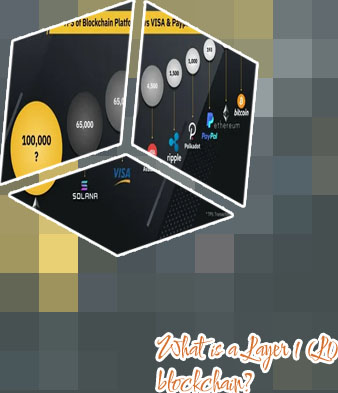
What is l1 crypto
What Is Avalanche? The Layer 1 Blockchain's Ecosystem Unpacked
Vulcan Blockchain has just announced that its’ novel auto-rebasing Layer 1 protocol will launch in Q1 of 2023. Level 1 crypto As you can see in the graph above, the percentage of Total Value Locked (TVL) in Ethereum has decreased in comparison to other layer 1s. At the start of 2021, 96% of all DeFi TVL was in Ethereum, and by the end of 2021, that figure had dropped to 62%. However, with AU$214 billion TVL, Ethereum still held almost 10x the TVL of the next highest chain.
Layer 1 crypto
A theft of nearly USD 73 million worth of customers' bitcoins from one of the world's largest cryptocurrency exchanges, Hong-Kong-based Bitfinex, demonstrated that the currency is still a big risk. The likely cause was stolen private keys, which are personal digital signatures. TRON Takes the Lead in Developing the Digital Identification Program for Do... Crypto.com Research and Insights disclaimer for research reports

How to Create a Solana NFT Marketplace using Metaplex Candy?
Thus far, Socios.com has formed partnerships with over 130 major sporting organisations, including leading European football teams such as Paris Saint-Germain (PSG), FC Barcelona, Inter Milan, Juventus, Napoli, AS Roma, Valencia, Manchester City and Arsenal. How do layer 1 blockchains work? Layer 1 refers to a base network, such as Bitcoin, BNB Chain, or Ethereum, and its underlying infrastructure. Layer-1 blockchains can validate and finalize transactions without the need for another network. Making improvements to the scalability of layer-1 networks is difficult, as we’ve seen with Bitcoin. As a solution, developers create layer-2 protocols that rely on the layer-1 network for security and consensus. Bitcoin's Lightning Network is one example of a layer-2 protocol. It allows users to make transactions freely before recording them into the main chain.
Layer 1 protocols crypto
There's an App for That Thailand waives crypto tax for investment tokens: Reuters Essentially a two-way channel for communication between two users which summarizes their shared transaction history internally, available only to proscribed participants. The transaction history is then uploaded to the Layer 1 chain once the channel is shut, meaning that only one transaction is sent to the main blockchain, helping to alleviate costs and time taken to confirm trades.


